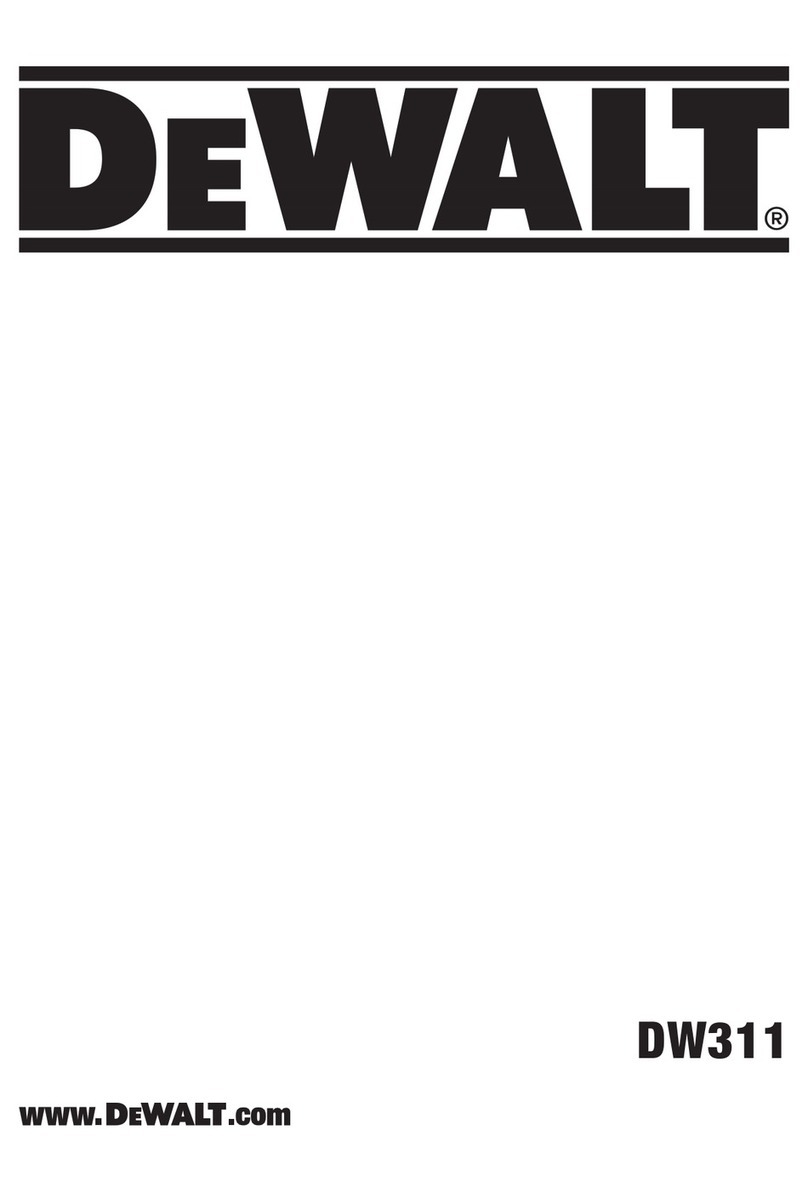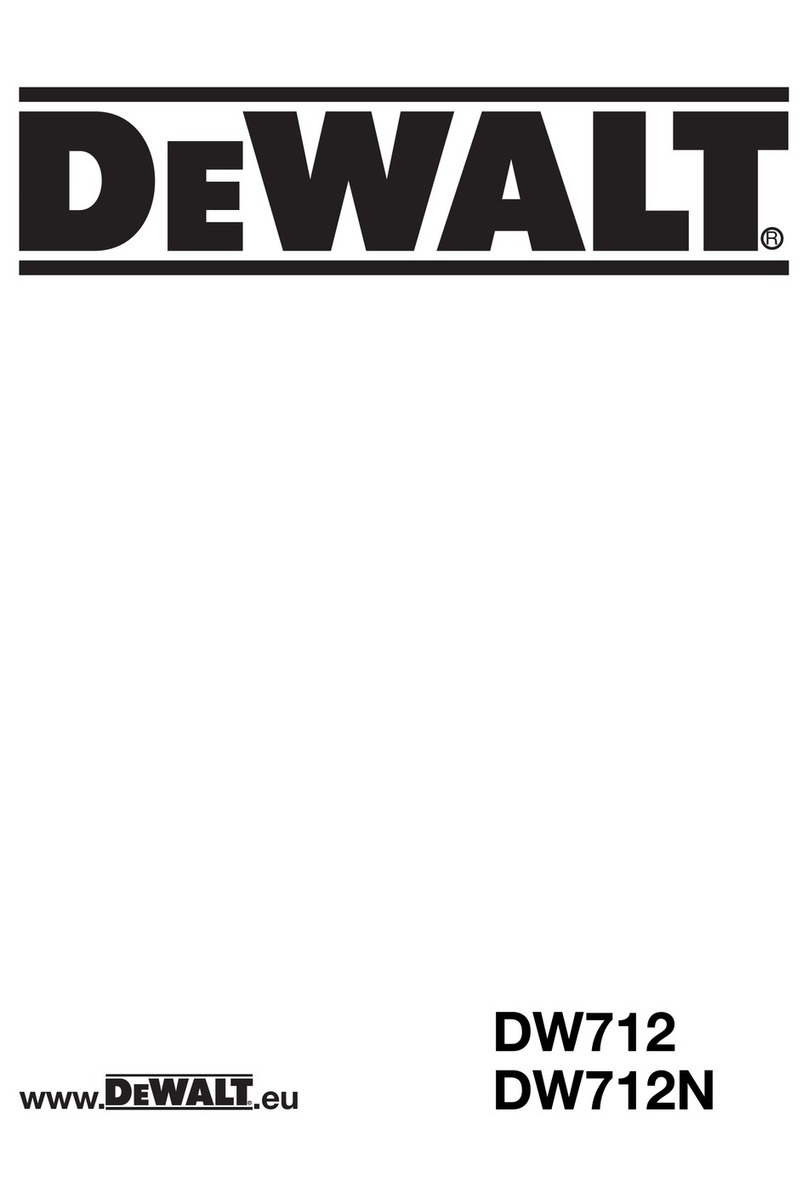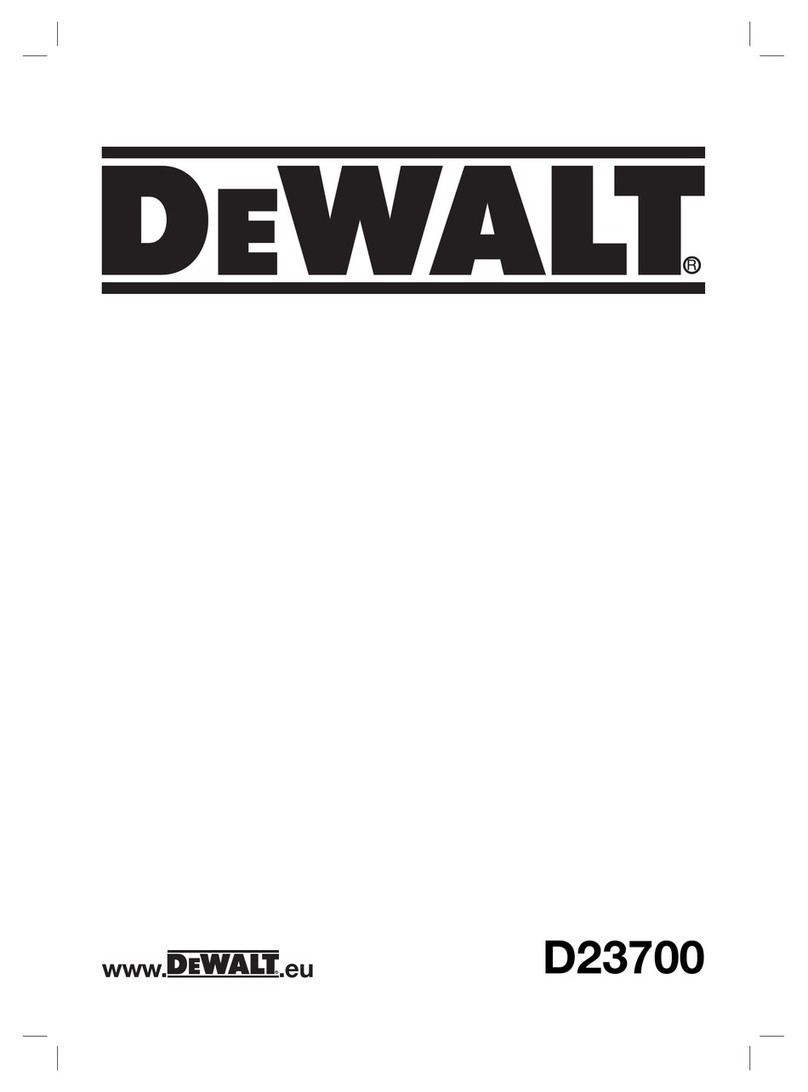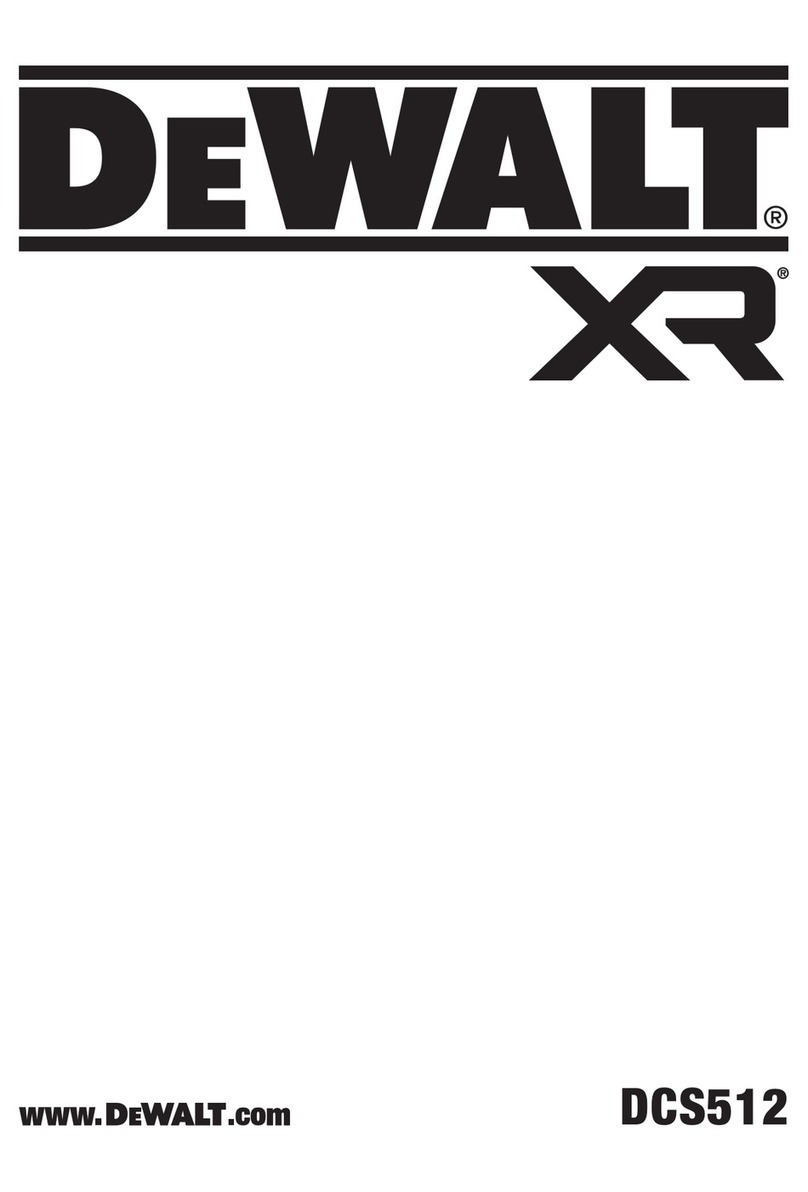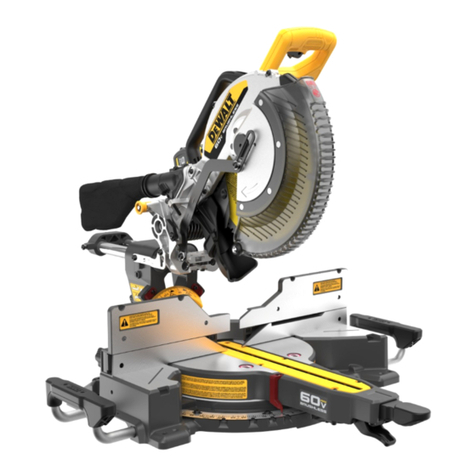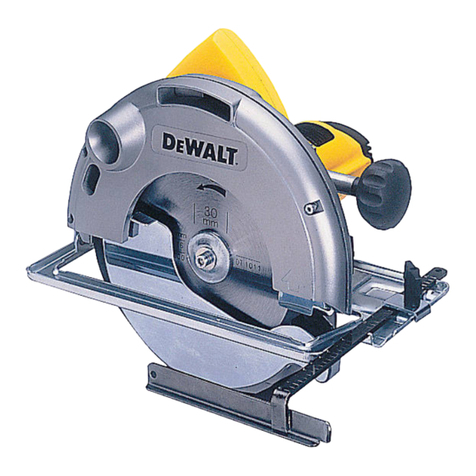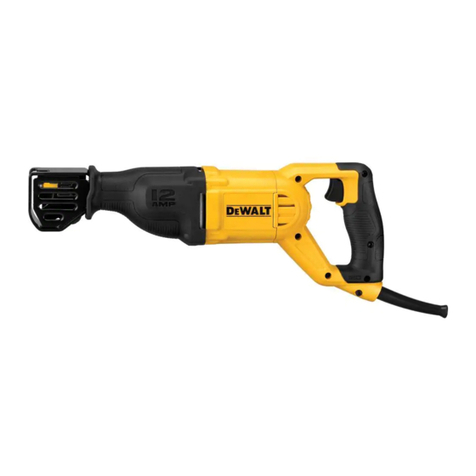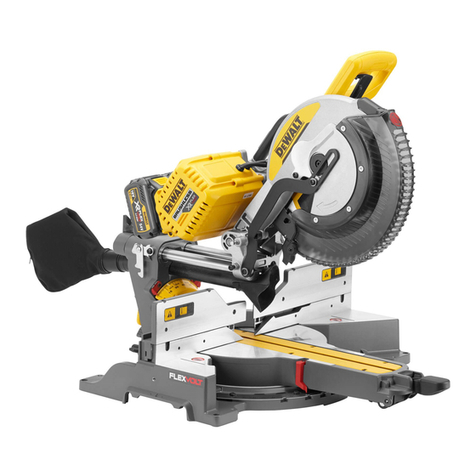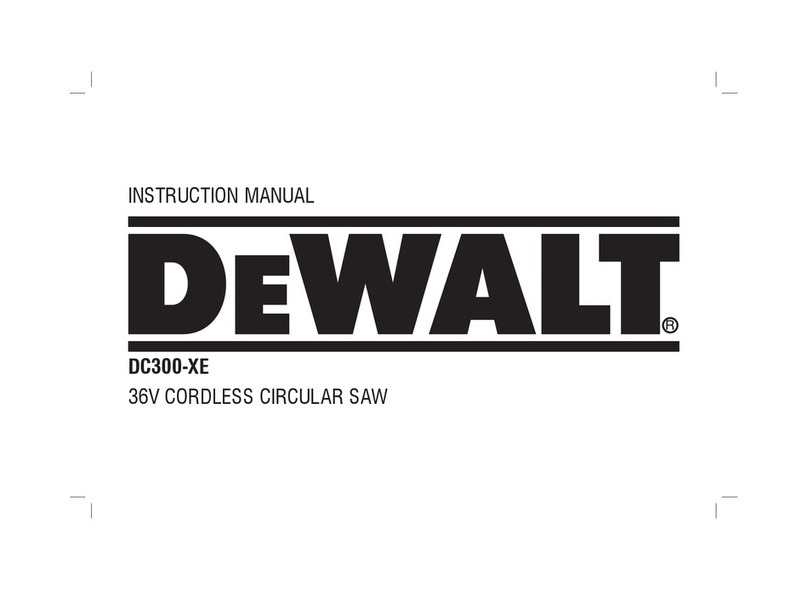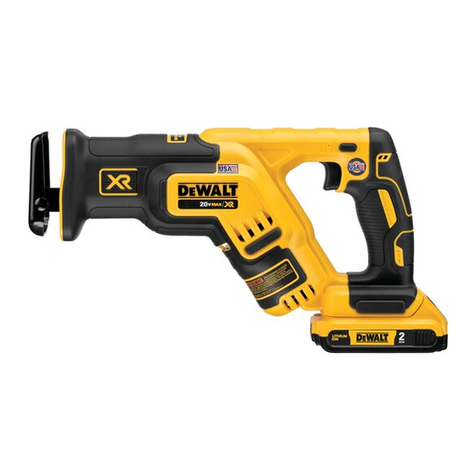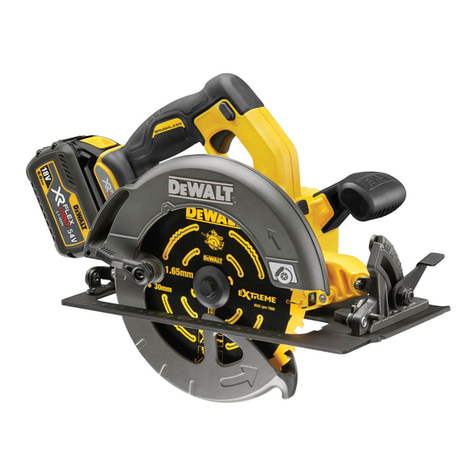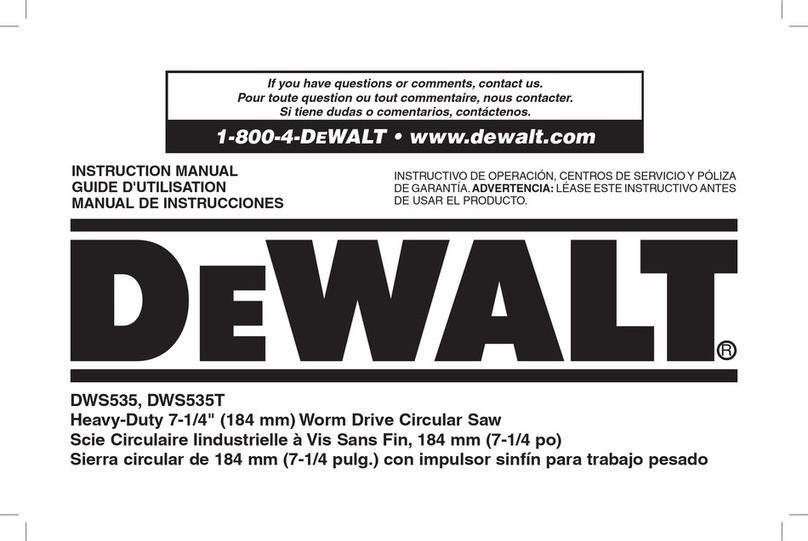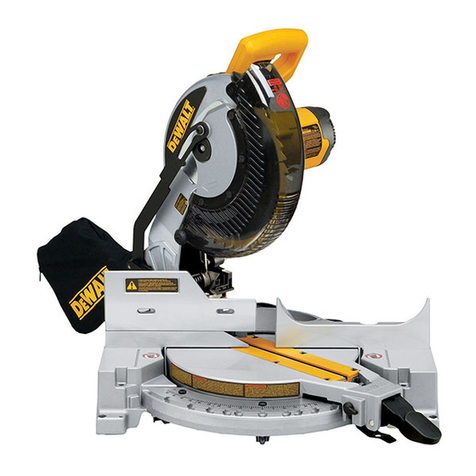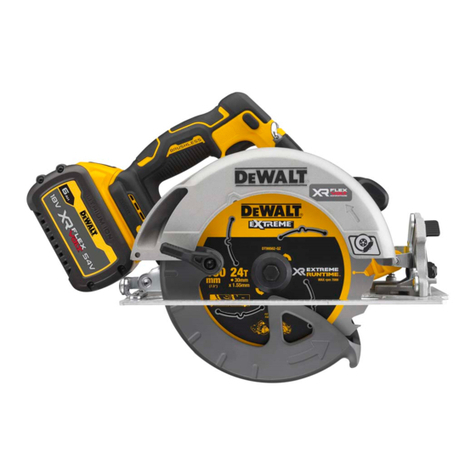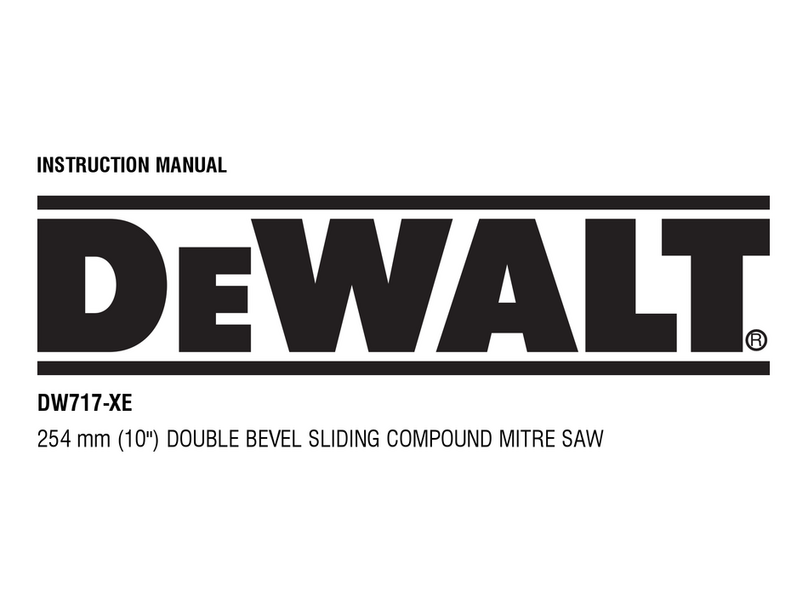resultinginlossofpowerandoverheating.Whenusingmorethan
oneextension to make up the total length, be sure each individual
extension contains at least the minimum wire size. The following
table shows the correct size to use depending on cord length and
nameplate ampere rating. If in doubt, use the next heavier gauge.
The smaller the gauge number, the heavier the cord.
Ampere Rating
Minimum Gauge for Cord Sets
Volts Total Length of Cord in Feet (meters)
120V 25 (7.6) 50 (15.2) 100 (30.5) 150 (45.7)
240V 50 (15.2) 100 (30.5) 200 (61.0) 300 (91.4)
Than
0
6
10
12
WEAR
More Not More
Than
6
10
12
16
PROPER
AWG
18 16 16 14
18 16 14 12
16 16 14 12
14 12 NotRecommended
• APPAREL. Do not wear loose clothing,
neckties, rings, bracelets, or other jewelry which may get caught in
moving parts. Nonslip footwear is recommended. Wear protective
hair covering to contain long hair. Air vents often cover moving
parts and should also be avoided.
•ALWAYS USE SAFETY GLASSES which meet the ANSI Z87.1
requirements. Also use face or dust mask if cutting operation is
dusty. Everyday eyeglasses only have impact resistant lenses, they
are not safety glasses.
•SECURE WORK. Use clamps or a vise to hold work. It's safer
than using your hand and it frees both hands to operate tool
•DON'T OVERREACH. Keep proper footing and balance at all
times.
•MAINTAIN TOOLS WITH CARE. Keep tools sharp and clean
for best and safest performance. Follow instructions for lubricating
and changing accessories.
•DISCONNECT TOOLS before servicing; when changing
accessories, such as blades, bits, cutters, and the like.
•REDUCE THE RISK OF UNINTENTIONAL STARTING. Make
sure switch is in off position before plugging in.
• USE RECOMMENDED ACCESSORIES. Consult the instruction
manual for recommended accessories. The use of improper
accessories may cause risk of injury to persons.
•NEVER STAND ON TOOL. Serious injury could occur if the tool
is tipped or if the cutting tool is unintentionally contacted.
•CHECK DAMAGED PARTS. Before further use of the tool, a
guard or other part that is damaged should be carefully checked
to determine that it will operate properly and perform its intended
function -- check for alignment of moving parts, binding of moving
parts, breakage of parts, mounting, and any other conditions that
may affect its operation. A guard or other part that is damaged
should be properly repaired or replaced.
•NEVER LEAVE TOOL RUNNING UNATTENDED. TURN
POWER OFF. Don't leave tool until it comes to a complete stop.
Additional Safety Rules for Chop Saw
•Always wear proper eye and respiratory protection.
•Before using, inspect the cutting wheel for cracks or flaws.
If such a crack or flaw is evident, discard the wheel. The
wheel should also be inspected whenever you think the tool
may have been dropped. Flaws may cause wheel breakage.
•When starting the tool with a new or replacement wheel
or if you are unsure of the condition of the wheel, hold the
tool in a well protected area and let H run for one minute. If
the wheel has an undetected crack or flaw, ff should burst
in less than one minute. Never start the tool with a person in line
with the wheel This includes the operator.
•In operation, avoid bouncing the wheel or giving it rough
treatment. If this occurs, stop the tool and inspect the wheel for
cracks or flaws.
• Clean your chop saw periodically following the procedure in this
manual.
• Do not remove wheel guards or base.
